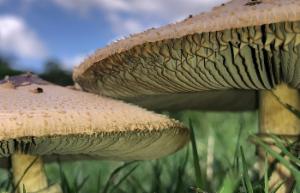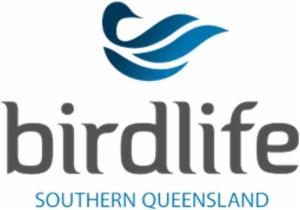Search for Hyporhamphus australis returned 4,679 results.
Refine results
Refine results
Section
- Species (3,422)
- Site Page (621)
- Data resource (322)
- Biodiversity Science project (159)
- Institution (50)
- Support article (39)
- Common Name (21)
- Data provider (21)
- Species list (12)
- Spatial layer (8)
- Collection (4)
Taxonomic rank
- Species (1,855)
- Unranked (1,131)
- Variety (271)
- Subspecies (146)
- Form (12)
- Genus (3)
- Subvariety (2)
- Infraspecific Name (1)
- Species Group (1)
Image available
- Yes (537)
Lifeforms
- Insects and Spiders (543)
- Crustaceans (106)
- Fungi (84)
- Molluscs (81)
- Fish (61)
- Birds (23)
- Mammals (13)
- Reptiles (12)
- Amphibians (2)
Taxonomic status
- Accepted (1,490)
- Synonym (1,270)
- Heteroptypic Synonym (281)
- Homotypic Synonym (212)
- Misapplied (55)
- Miscellaneous Literature (38)
- unreviewed (32)
- Pro-parte Synonym (15)
- Excluded (12)
- unreviewedSynonym (12)
- Inferred Accepted (2)
- Subjective Synonym (2)
- Inferred Unplaced (1)
Conservation status in Australia
- Endangered (10)
- Vulnerable (10)
- Critically Endangered (3)
Conservation status in ACT
- Endangered (1)
- Vulnerable (1)
Conservation status in NSW
- Vulnerable (7)
- Endangered (6)
- Critically Endangered (1)
- Extinct (1)
Conservation status in QLD
- Vulnerable (6)
- Endangered (4)
- Near Threatened (2)
Conservation status in VIC
- Endangered (10)
- Critically Endangered (7)
- Vulnerable (5)
Conservation status in TAS
- Endangered (6)
- Rare (6)
- Extinct (1)
Conservation status in SA
- Rare (7)
- Vulnerable (5)
- Endangered (4)
Conservation status in WA
- Endangered (4)
- Critically Endangered (3)
- Priority 1: Poorly-known species (3)
- Priority 3: Poorly-known species (3)
- Priority 4: Rare, Near Threatened (3)
Conservation status in NT
- Endangered (3)
- Vulnerable (1)
-
Support article: How to make a scatter plot
User Guide 7 Begin at the Atlas of Living Australia homepage. Select the Spatial analysis (Spatial Portal) option under Search & analyse. Click on Tools, then Scatterplot - single. Select Australia, then type the species or common name into the search bar in Step 2. Choose the species you are looking for from the drop down menu options that appear. Choose None at Step 3. You then need to select two layers for the axes of your scatterplot. There are many layers to choose from...
-
Support article: Introduction to the ALA
Jump to section: Introduction to the ALA Team Collaboration and Partnerships Funding Introduction to the ALA The Atlas of Living Australia is a collaborative, digital and open infrastructure repository that aggregates biodiversity data from multiple sources to make it accessible for research, analysis, and education...
-
Biodiversity Science project: Koala Count 2015
Accurate species distribution data can be a powerful tool for conservation action. Annual data can be used to highlight Koala hotspots and detect areas where Koalas are absent or in decline. This abundance data can then be used as unequivocal evidence for why we need to protect koalas in some regions of Australia...

-
Biodiversity Science project: Frog Census of the South East
We need your help to protect the frogs of the South East and improve their plight by becoming a citizen scientist. Natural Resources South East has joined with Atlas of Living Australia to develop a web-based Citizen Science Project to better understand how the frog populations in the South East have been going since the original 2006 frog census.

-
Biodiversity Science project: The Mycology (Fungi) Research Project
Fungi play critical roles in the functioning of healthy ecosystems, driving nutrient cycling, providing food for a variety of wildlife, maintaining the health of plants and storing carbon in soils. However fungi are one of the least studied groups of organisms in Australia...

-
Biodiversity Science project: Nillumbik fauna
Nillumbik Shire Council invites invite schools, individuals and community groups to join us in recording what birds and animals they observe within the shire. The more we know about our natural world, the better we can manage and protect it for the future. This is a way for residents to learn about their own environment, acquire new knowledge and skills and make a meaningful contribution to biodiversity data...

-
Biodiversity Science project: Powerful Owl project of southern Queensland
The general public is encouraged to report Powerful Owl sightings through BirdData, which are then provided to the Atlas of Living Australia as well as other local and state databases. Those who want to formally participate in the citizen science project need to attend an introductory workshop, and will be invited along to gain experience in the field to help us identify breeding locations, and monitor breeding success...

-
Biodiversity Science project: Coorong Watch (Pilot test version)
To document location and timing of algal blooms, black oozes from the sediment, and other observations along the Coorong in South Australia. Record your sightings of algal blooms, black oozes, dead fish or crabs, or other observations whenever you visit. This will assist the Healthy Coorong, Healthy Basin program to support the long-term health of the Coorong.

-
Biodiversity Science project: Northside Squirrel Glider Monitoring Project
Stage 1 of the project involved the following: 1) Squirrel Glider Nest Boxes – installation, monitoring and maintenance of nest boxes 2) Squirrel Glider Monitoring through: • Nest Box and Tree Hollow Monitoring Program (x 4 monitoring events) • Spotlighting Monitoring (x 2 monitoring events) • Uploading of observational data onto The Atlas of Living Australia 3) Squirrel Glider Community Awareness Day.
-
Biodiversity Science project: CSIRO Energise
CSIRO has developed a mobile app to help Australian households contribute to national energy research. The CSIRO Energise app lets you participate in energy surveys, learn about the energy challenges that our researchers are tackling, and read about their latest energy breakthroughs. Be part of the research team that's building an energy future for Australia that is affordable, reliable and sustainable.
